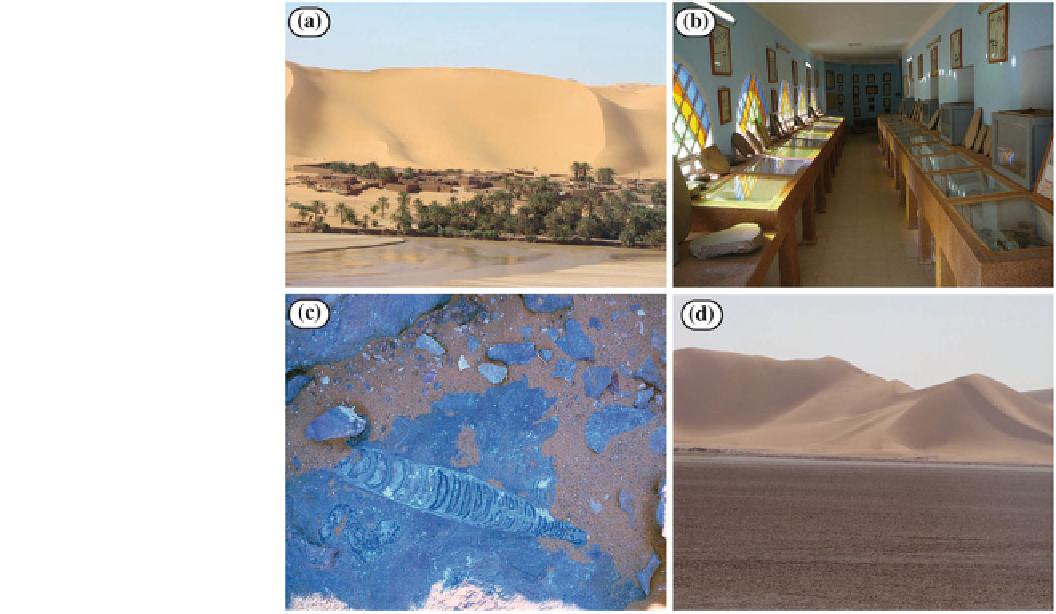Geology Reference
In-Depth Information
Fig. 5
Ougarta range
a
Beni
Abbes Oasis;
b
Geological
museum of Beni Abbes;
c
Devonian giant Orthoceras from
“
Muraille de Chine
”
;
d
Dunes
from occidental Erg
2.4
The Ougarta Range
important
site for geological
research activities
(Chikhi-Aouimer
2007
);
The Ougarta range, located in South-western Algeria, is a set
of high ground oriented SE-NW about 250 km long and
100 km wide. It contains thick Paleozoic rocks (Cambrian to
Devonian) that rest on a Precambrian basement. These ser-
ies, deformed during the Hercynian orogeny, are folded into
domes and synclines (Joly et al.
1991
). The Ougarta is
interesting because this is one of the few regions in Algeria
where continuous exposure of Paleozoic series more than
7,000 m thick can be found. In this series, the entire tectono-
sedimentary sequences from Cambrian to upper Devonian
can be traced to the south-west across Algeria. It is also the
only region in the Algerian Sahara where Hercynian tec-
tonics is de
, located 30 km from Beni
Abbes it shows an outcrop of bioclastic limestone of
10 m thick; the limestone is an important strati-
graphic benchmark in the Saharan platform (Nedjari
2007b
); this limestone, early Devonian age (Emsian),
it is well known for their giant
Orthoceras
(Fig.
5
c),
and currently is a protected site; and
(iv) the dunes of the Great Western Erg, constituting a
real sandy sea (Fig.
5
d) that covers an area of
80,000 km
2
; the height of the dunes varies from a
few dozen meters to over 300 m; these dunes con-
stitute a major tourist attraction.
In addition to the above, the Ougarta hosts several sites
with prehistoric carvings. The most important are those of
Tahtania near Taghit which are the oldest in the Sahara
(Alimen
1966
).
(iii)
“
La muraille de Chine
”
ned through well-exposed folded structures.
Ougarta range includes, among others,
the following
geosites:
(i)
two important exposures in the oasis of Ougarta
(Fig.
5
a) of the Ordovician-Silurian transition,
marked by tectonic events and traces of the great
glaciation that affected the Sahara during this period
(Nedjari
2007a
); in addition, this oasis is an impor-
tant prehistoric site where hundreds of prehistoric
tools were discovered (Vinot
1947
);
2.5
The Impact Craters
Impact craters are geological structures formed when large
meteoroids or asteroids collide with the Earth
'
s surface. To
date, 182 meteorite craters are known on Earth. Algeria is
one of the Arab and African countries that contain most
craters; four were identi
(ii)
the small town of Beni Abbes, houses a small geo-
logical museum (Fig.
5
b) which belongs to
“
l
'
Unit
é
ed in the Algerian Sahara: Amguid,
Maadna, Ouarkziz and Tin Bider (Koeberl
1994
). These
craters are amongst the most well-de
de Recherche sur les Zones Arides (URZA)
created
in 1942. Through this center, Beni Abbes became an
”
ned in the world and

